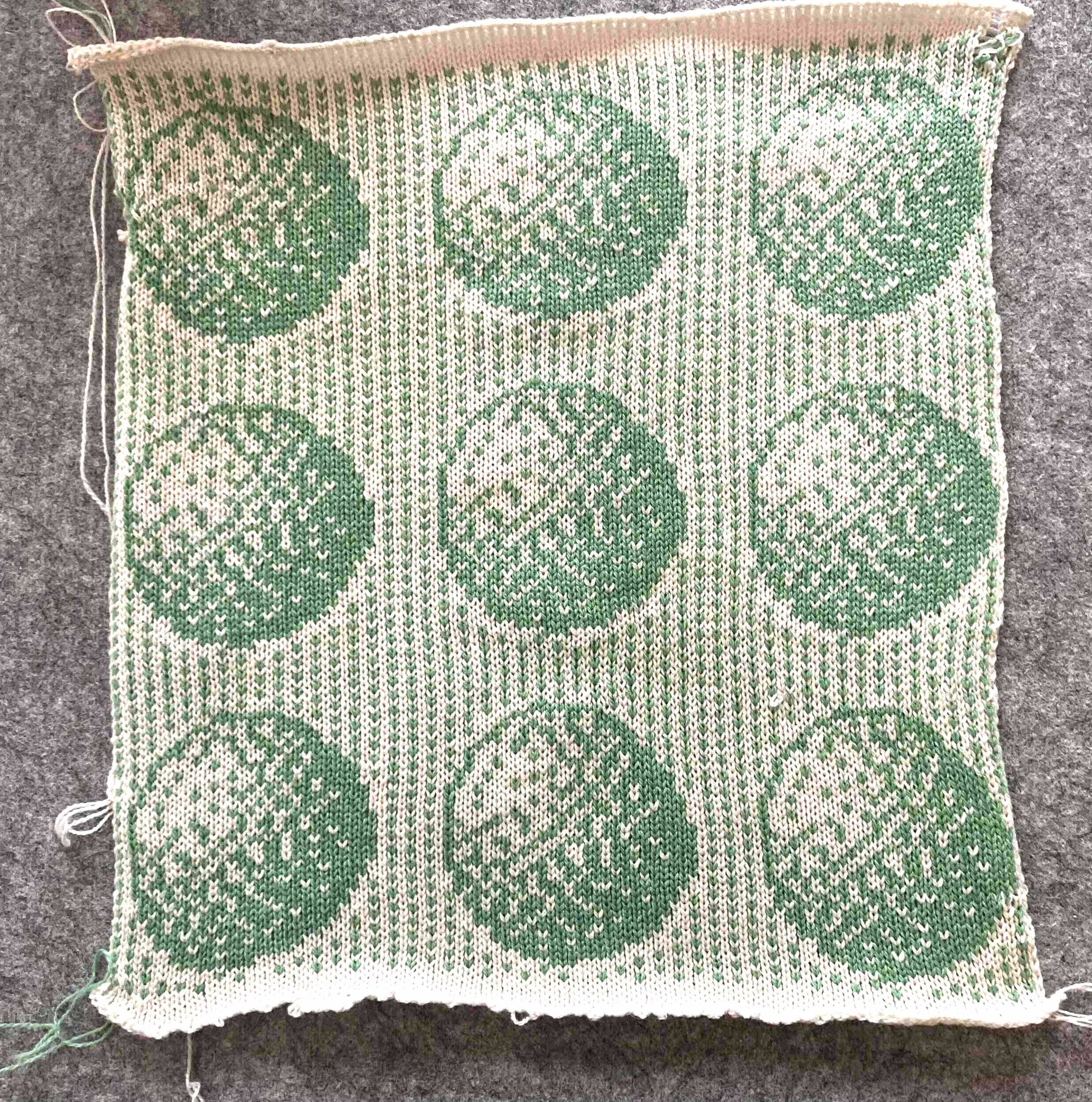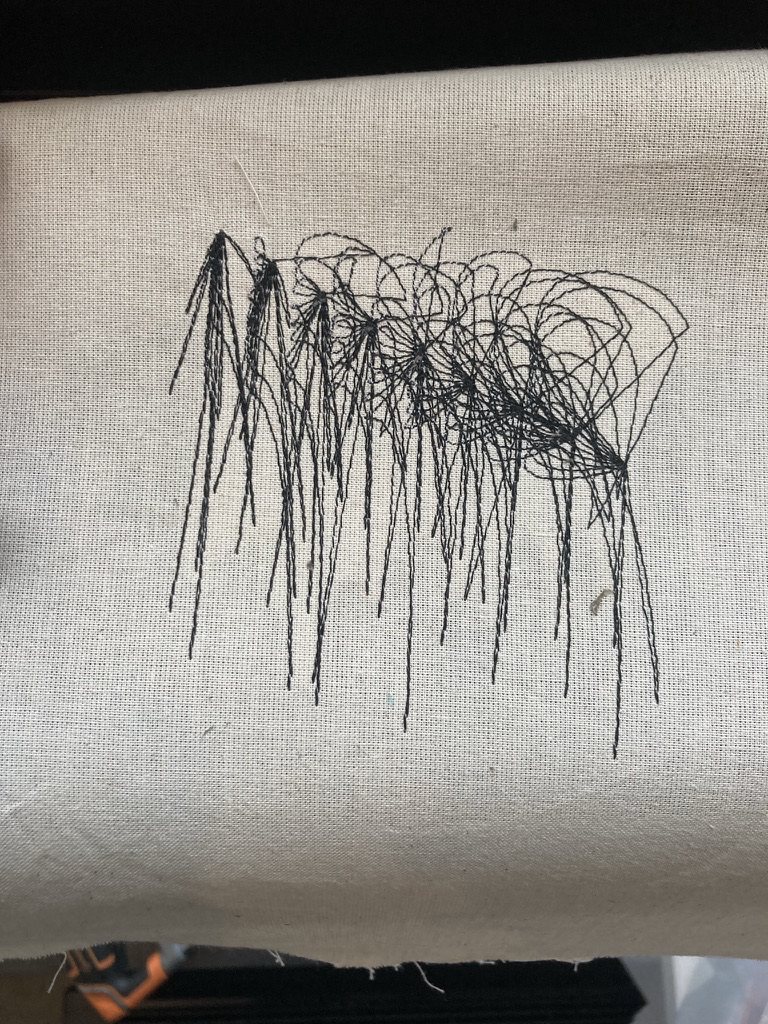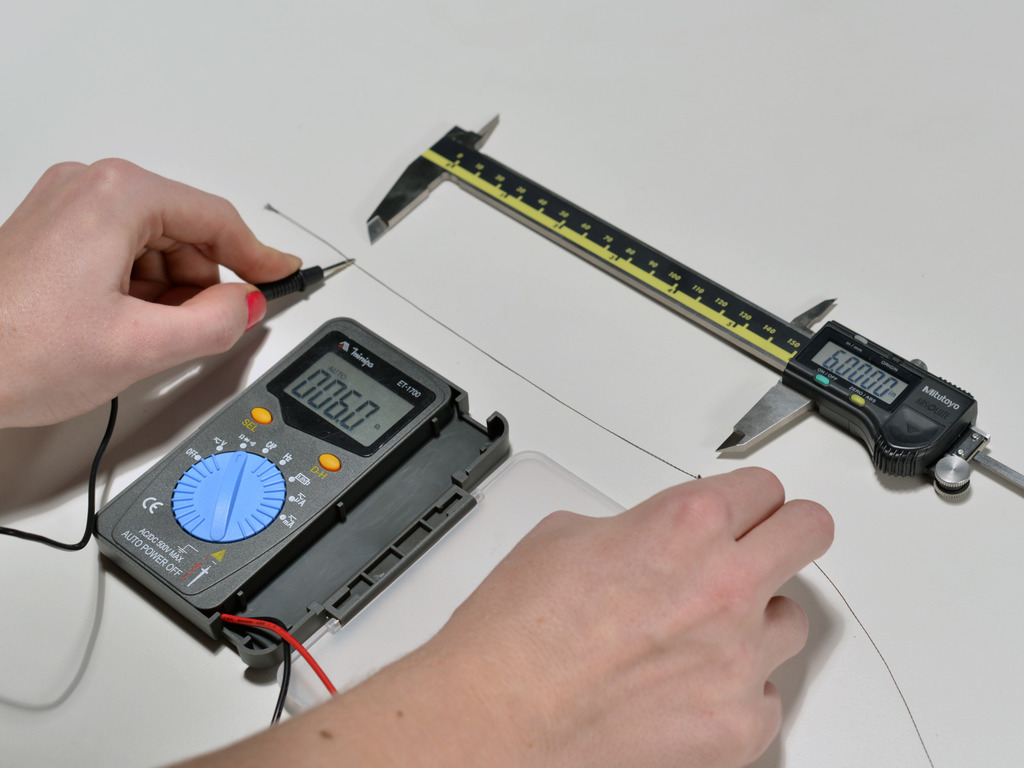Digital and e-textile design at the CCI
This page is a guide to different techniques that can be used in digital and e-textile design, resources we have at the CCI, places to source materials, and possible sources of inspiration/research references.
Here, 'digital design' refers to textile equipment that works with CAD, and e-textiles specifically to the integration of electronic components within textiles. Both of these things are well-supported at the CCI and can also be done in combination.
Equipment
At the CCI we have two main pieces of digital textiles equipment:
- the Silver Reed SK840 Digital Knitting Machine, which may be used either manually, or programmed using the DesignaKnit software. It's also possible to knit with conductive yarn on the machine, to create sensors and other electronic components.
- The Brother Innov-is V3 Embroidery Machine, a digital embroidery machine which may be programmed using either Brother's PE Design software (think: MS Paint but for sewing), or the Processing plugin PEMbroider.
Both of these machines require training to use. Please check Orb for upcoming tutorials, or contact Agnes for more information. Additionally, we have a Brother sewing machine that can also be used for student projects. If you have used a sewing machine before you may use this without training, otherwise ask the technicians.
Programmable knit sample:

Digital embroidery sample:

Online Resources
digital design
Guides to using the CCI
e-textiles
A fantastic resource for most e-textile related ideas and tutorials is How To Get What You Want, aka the KOBAKANT art collective DIY wearable technology documentation site. I'd strongly recommend just browsing around the site -- they have some great detailed guides, including knitted sensors, robust hard/soft connections, textile speakers, and using conductive velcro as a switch.
Materials
Non-electronic materials
At the CCI we have embroidery thread, sewing thread, lambswool and cotton yarn, and limited amounts of calico, cotton drill and backing fabric to experiment with on the machines. If you are planning a larger project, we ask that you purchase your own materials, and can give you advice on doing so.
Conductive Thread
It's better to think of conductive thread as a long resistor than a traditional cable. All conductive threads come with an associated resistance per unit length, and this can vary a lot between different brands and thicknesses. For a ballpark figure, Adafruit's 2 ply conductive thread is made of stainless steel, and has a resistance of 16 ohms/foot. If you're unsure of which brand you're using, you can always use a multimeter to measure it.
Adafruit have a short conductive thread tutorial that covers basics like hand- and machine-stitching, and steps to prevent short circuits.
Conductive Yarn
Conductive yarn is different to conductive thread: it has much higher resistance, which makes it inadequate to directly connect components unless they are very close together or the knitted yarn is stretched, but it is well-suited to pressure sensing.
When a knitted sample is held loosely, it has a high resistance as the steel fibres in the yarn do not make contact with one another, but when the sample is stretched, the steel fibres are pulled into closer contact, reducing the resistance and allowing the flow of an electric current.
Conformable Connections
Conformability (using soft and flexible components) is key to making robust e-textile projects, and is particularly relevant to projects using conductive thread. We have a stock of conductive velcro and poppers that can be used to integrate wires into projects, as well as super-flexible silicone wire.
Sourcing Materials
- How To Get What You Want has a really good, long list of 'Basic E-textile Materials', as well as detailed reviews for materials such as Conductive Yarn, Conductive Paint/Ink, and Piezoresistive Fabrics
- Sparkfun has an e-textiles section that includes conductive thread, Lilypad and Chibitronics kits, pressure sensors and conformable data busses.

